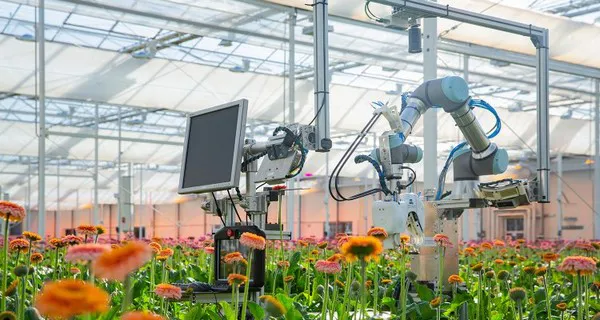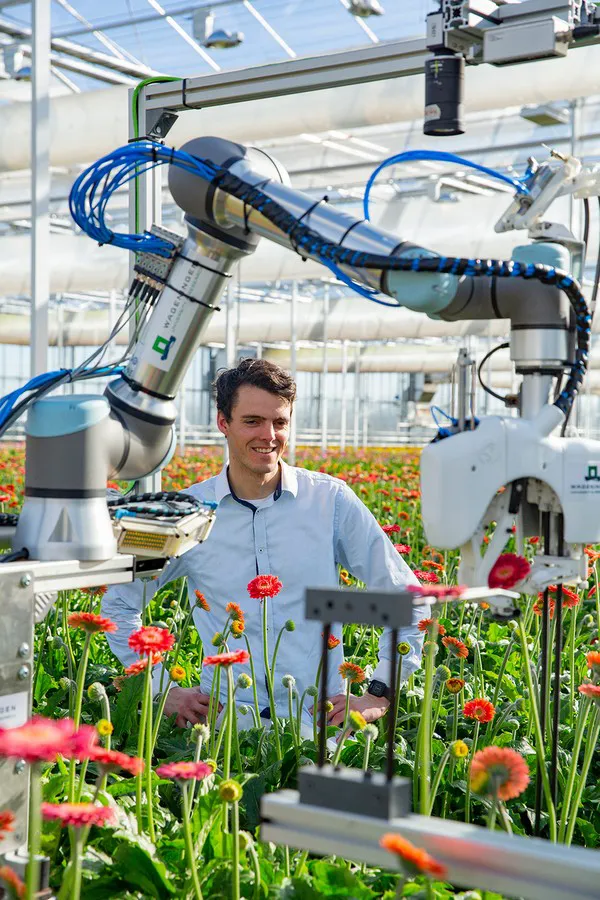The gerbera harvesting robot has improved significantly over the past year. The end-effector (which harvests the gerbera stems) is considerably faster than before. This is mainly thanks to changes in the way the gripper descends down the stem. In addition, the robot relies less on 3D visualizations, so the processing power needed to harvest the gerberas is shortened.

In short, the robot works as follows: a top-view camera detects the flowers that are ripe and need to be harvested. A robot arm with an end effector approaches the stem directly under the flower and descends to the bottom of the plant. Then the actual harvesting starts. There are roughly two methods for this: picking the stem or cutting the stem. The latter method has been chosen for the gerbera harvesting robot. The main advantage of this method is that the harvesting direction does not matter, which is the case with picking.
To harvest, the robot has to find the exact location of the stem. In the previous prototype, the robot calculated the position and orientation of the entire stem under the flower with the help of camera information and calculated 3D visualizations. This requires a lot of computing power and thus time. “We, therefore, worked on a new setup in collaboration with MTA, which has been involved in the project since this year. In the new setup, the robot does not use 3D images to calculate the stem position anymore. Instead, it locates the flower position, which is much easier to see. Then the robot arm descends to about 4 centimeters below the flower. That is logically the only place the stem can be and thus the highest chance the gripper can catch the stem. This method is significantly faster”, explains Jos Ruizendaal, researcher and project lead.

The gerbera harvesting robot was developed by researchers from the Agro Food Robotics program and the business unit Greenhouse Horticulture of Wageningen University & Research. The research project is a public-private partnership and is financed by the Gerbera Crop Cooperative and the Horticulture & Propagation Materials Top Sector. It is not yet known when the robot will be on the market.
Source: wur.nl
